It’s reportedly difficult to do live coverage for Ironman Cairns. That sucks for the hardcore fans out there wanting to watch such stars as Javier Gomez and Braden Currie battle it out for the Ironman Asia Pacific title but it is very beneficial for my race reporting as I can embellish as I please and noone, beyond those that raced, can argue with my version of events.
For the most part, Cairns, the Northern QLD tourist magnet, was rather generous with the conditions she delivered on race day. The heat was relatively cool (still bloody warm), the wind relatively calm (still bloody windy) and croc sightings were either non existent or kept well under wraps. Perhaps the trickiest conditions faced by athletes on the day were during the swim. Above the surface Palm Cove was whipped into a decent chop while beneath the surface a strong current prevailed. I took note of the both the rapid drop off from the sand line to beyond waist deep water and the strong undertow pulling from right to left and used both factors to a distinct advantage as the gun went off. I nailed the beach start and my tactical positioning on the start line allowed me to use the current to my advantage and was soon positioned well above my swimming ability level a few hundred metres into the race. I was slightly uncomfortably nestled well within the front group. A second pack was already being left behind. Seeya suckers! I assumed most of the the major players were aboard this Javier Gomez express aquatic taxi and dug very deep to ensure I remained in the draft.
Approaching 1.9kms and the far turn buoys, all was well. Javier Gomez for the non-triathletes out there is well known for his horse sized heart and among his athletic arsenal possesses a 1500m swim time that I’m told could qualify him for the Olympics. It appeared he was conserving energy to some degree to save everything he could for the long day ahead. I relaxed momentarily to congratulate myself on making it this far in the wake of greatness. At that very moment my supposed friend and Trek Factory Racing teammate Tim O’Donnell made the very clever decision to take the lead and hammer the pace around the buoy turns to shake off any free-loading riff raff. Unfortunately for me I was the riff raff and soon dislodged from my hiding space. Much like cycling, the draft of the pack makes the effort for speed much easier on the guys behind in a straight line but out of corners it’s a massive sprint effort to stay with the group. By the second buoy turn I had lost 4-5 metres and had to decide whether I turn myself inside out to get back into the draft or minimise Ironman destroying heart rate spikes and wait for the second group. My biggest concern was that Terenzo Bozzone was in the front group who when firing has one of the best first 40km bike power outputs in the game and I didn’t want him to be out of sight, out of mind early in the race . So I dug as deep as I could for 300m. The gap didn’t close but rather lengthened out to a heartbreaking 10-12 metres and finally I had to cut my losses and back off my effort a lot before I ruined my whole day. I rolled onto my back, swam some backstroke and sucked in much needed oxygen to get my heart rate back under control.
The other complicating factor of the Ironman Cairns swim is that it’s wetsuit legal due to the risk of jelly fish stings despite the water temperature being warm. The result is that even those who swim comfortably are likely starting the bike ride already somewhat dehydrated. Swimming at or above threshold as I did for the first 2-2.5kms compounds this problem and while post race I looked at the sky cursing my race nutrition on the run for a somewhat disappointing result, in retrospect there were quite a few factors, nearly all entirely down to my decision making during the race that could have attributed to my problems on the run.
I enjoyed some easier swim time as the second group gradually approached and enveloped me into their cosy embrace. I was pleasantly surprised to note that there was some real horse power back here including Bozzone, Tim Berkel, Kyle Buckingham and Luke McKenzie just to name a few.
Onto the bike and I was relieved to see my heart rate very responsive and my legs feeling very ready to play. A sign I’m well tapered for the event. I can’t deny that at times I found it difficult following my new coach for 2018, Alan Couzen’s plan. I like to race a lot but the only way to stay on track for an Ironman build and race a lot is to train through some races which I found tough to swallow. Ironman 70.3 St George in particular. Racing a field of that quality, I really needed a two week taper after a big block of work in Boulder to get the most out of myself come race day. Alan, thankfully recognised my weakness for wanting to do really well in every single race kept me on track with some minimal tapers in the races building up to Cairns. The result is solid races but often struggling to hold a high heart rate due to accumulated training training fatigue. It’s a price I’ve realised I have to pay if I want to get onto an Ironman start line with the adequate training behind me.
The only downside of feeling superbly tapered combined with the truly magnificent Ironman Cairns bike course and excitement of racing so many top quality racers is that my froth level was a little too high. I needed to be at a smooth Aussie flat white froth level. Minimal froth, calm and calculated with a strong finishing flavour. Instead I was bucking away on my supremely aero Trek Speed Concept at an American Cappuccino froth level. Way too much froth! The front swim group that included Gomez, Braden Currie and Tim O’Donnell were not putting in any time so we could have slowly chipped away at their lead but instead I was loving the ride way too much and putting in unnecessary big surges along with with McKenzie, young Lachy Kieran and Kyle Buckingham. We steadily reeled in the front few guys by 50-60kms and one very large group formed.
I remained in the front few guys and over 180kms the group gradually whittled down to a select few. In the final 60kms both O Donnell, Buckingham, Currie and I all seemed pretty keen to get some distance on Gomez, who’s marathon was likely to be very fast. A gap opened up at one stage but then I took a wrong turn mistaking a volunteer’s arm signal as a turn signal leading the aggressors astray. A quick U-turn to make ammends but it brought the group back together and with the strong head wind it was going to be difficult to get another opportunity to split the small group. Terenzo didn’t follow the rest of us down the wrong street used the opportunity to bridge across to Denis Chevrot who had ridden carefully minimising surges until it counted pushing off the front with no-one countering the move late into the ride.
I felt great thought the entire 180kms, getting off in 4 hours and 22 mins well in the mix; Terenzo and Chevrot were slightly ahead while Currie, Gomez, O’Donnell and Buckingham all in transition alongside me.
Despite a kit change from my Santini ‘Redux’ sleeved suit to a Santini Crop top and Budgy Smugglers I was out of transition pretty much as quick as the other guys clearly demonstrating my talent for rapidly getting my gear off. Unlike my bike ride which included a few too many HR spikes I was very determined to ignore what the other guys were doing and simply run my own marathon pace. Braden and Gomez were off at what must have been 3.15-3.20/km pace. ‘Suicidal pacing’, I told myself. However I had forgotten one of my favourite Sebastian Kienle quotes- “there are other advantages to being out in front.. like being a legend” and the legend factor can never be ignored as it can gift an athlete an extra 5% of psychological will power. Ironman wins have come from both an even paced marathon split or ‘make hay while the sun is shining’ style pacing. Prime example- Patrick Lange for an even paced and Craig Alexander for a positive but still smoking fast marathon pacing.
You can’t help but give Braden Currie truck loads of respect. After the disappointment of getting sick from his kids and not being able to defend his Ironman New Zealand title, losing it to fellow Kiwi top dog and rival Terenzo Bozzone would have been a real punch to the guts. To lock down and focus on Cairns at the expense of ignoring a lot of other races where he could have made money along the way takes true belief and courage. In addition, a countless number of people would have told him that his pacing strategy in races is a little mental but he just keeps on being Braden, charging from the front with a crazy first 5kms in every race and in this instance cracking out a 2.40 marathon. To not only win but break the great Javier Gomez late in the marathon to clinch the championship title is a very special way to take victory. Javier held it together for an extremely admirable Ironman debut taking 2nd and Terenzo Bozzone 3rd, Tim O’Donnell 4th with a strong all round days.
One of the positive effects of having a break from training and spending more time with ‘normal’ people is my all consuming disappointment in the back half of my marathon starts to take some perspective and isn’t quite the disaster for all humanity that I felt post race. The day prior to the race I decided to integrate into my fairly standard running nutrition plan a new product that uses a special technology preventing the carbohydrates from being broken down in the stomach, delivering it straight to the intestines and supposedly decreasing the chance of GI distress. I had tried the product in training and it went down ok, but in retrospect it was late into a simulation session and I should have tried it many more times. I consumed it during the first half of the second lap of the run and from there nothing I consumed on the run would stay down and was burped or vomited back up. I still think the technology behind the product could be sound but for a sensitive new age stomach like my own, I potentially couldn’t handle the fructose component with my guts under Ironman duress. As the run proceeded and I knew I wasn’t getting in my much relied upon SOS for hydration I knew that eventually the electrolyte imbalance would likely lead to cramping and my suspicions came to fruition. In front of a large crowd I was at a standstill putting on a marvellous display of cramping contortions. Despite no longer having a sponsorship relationship with HOTSHOT I still swear that it’s the most effective anti-cramp formula out there once you’ve started getting twitchy or worse. I made the mistake of putting it in my special needs bag instead of carrying it with me which was several kms away so I had to stop/start my way until I was able to down the precious chilli flavoured nectar that seems to rapidly relax my neuromuscular fireworks. I got back to a sluggish pace but the back half of my marathon had gradually let me slip from 5th to 8th place. I crossed the line in quite a disorientated state in a mixture of disappointment, nausea and pride that I got it done.
In the days that followed, I took the usual but mistaken path of vowing sweet revenge on Ironman and planning another Ironman event as soon as I possibly could to utilise my current fitness and avoid another entire Ironman build. I even announced that plan on ‘Narcissistgram’. Soon after, both my manager, Evan Gallagher and coach talked me down from that ledge and logic prevailed. Firstly, I’m having a baby shortly and if the baby arrived early while I was off doing an Ironman I would never forgive myself. Secondly, one of my major objectives for the year and favourite events, Ironman 70.3 Philippines which is the Ironman 70.3 Asia Pacific Championships for 2018 is not far away and throwing another Ironman into the mix would almost certainly diminish a performance there. This race is incredibly important to me for numerous reasons one major reason being that Fred Uytengsu, Alaska Milk and the Sunrise Events team have been integral in their support of my career the past few years. A great performance in Cebu is a small way I can say thank you. The attempt on the Cebu title this year presents some unique challenges besides the terrific field I’ll be racing. With the arrival of bub number 3 I won’t be doing my usual training camp environment going into that event which has fared me so well in the past. Instead I’ll be dodging my boy’s snot rockets and dealing with the really quite pleasant winter climate of Byron Bay.
2 weeks later I’m going to head back to the heat and humidity of Asia to jump into a race I’ve eyed off with interest for a number of years, Ironman 70.3 Bintan. All roads still lead to the Ironman World Championships in Kona this year and Bintan will be my final chance to really test out my Kona race plans in similar heat and humidity.
I want to say an enormous thank you to my amazing wife, her family, my family and my sponsors. Trek Bicycles, Alaska Milk, Allen Sports, Santini, Bontrager, Roka, Oakley, SOS Rehydrate, Budgy Smuggler and Flight Centre Sports and Events.
All photos courtesy of @KoruptVision
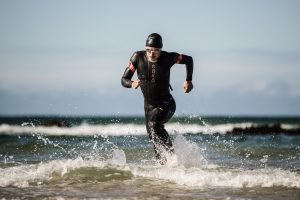
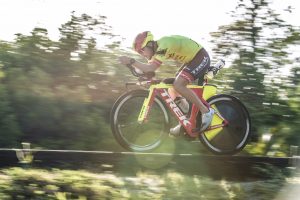
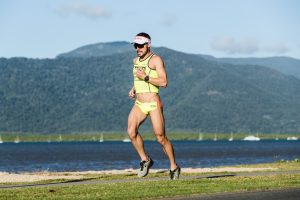
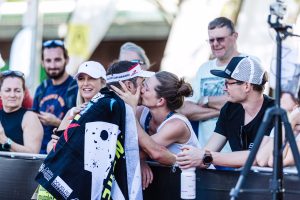
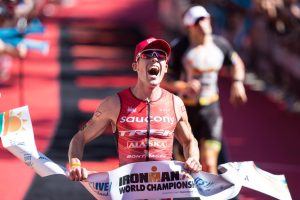
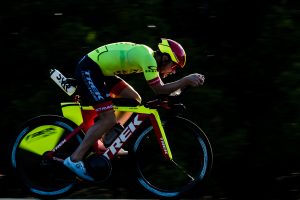
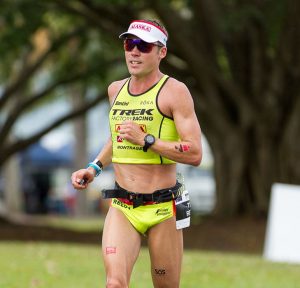

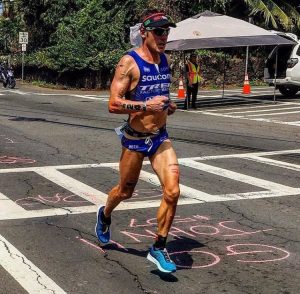
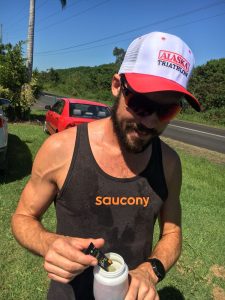
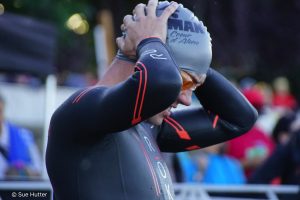
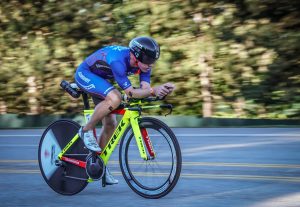
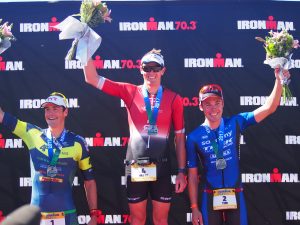
 Please contact:
Please contact: